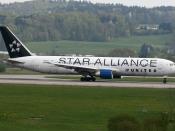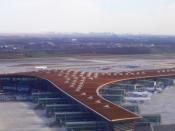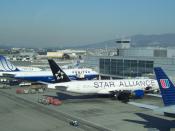Problem Identification
"The airline industry is facing the worst crisis in its history," Jaan Albrecht, CEO of Star Alliance, said after looking back at the events in 2001 (p. 618). The terrorist attacks on September 11th, 2001 and the economic recession had the airline industry face a sharp downturn for the second time since the beginning of the Gulf War in 1991-1992. Many airline companies had to think on how to get customers back and moreover how to keep their current customers. Furthermore the airlines are facing a new threat from low-cost carriers, which are emerging and succeeding, especially in Europe, in an incredible pace.
Causes of Problem
Star Alliance launched in May 1997 with renowned airlines as Lufthansa, United Airlines, Air Canada, SAS and Thai Airways. This alliance came to life shortly after the last phase of the "Third Package" (p. 619) was put to an end by the European Commission in 1997, in which they terminated constraints on European carriers from working only domestic routes beyond their national borders.
Many other airlines got into strong alliances, such as American Airlines and British Airways, KLM and Northwest, Delta Airlines and Air France. Alliances in the airline business are powerful ones and more and more frequent flyers choose one of these above-mentioned alliances, in order to obtain miles, an expanded international network and business lounge access in airports worldwide.
One of the major reasons for the airlines getting into alliances was the Gulf War in 1991-1992, where airlines in general saw slump in air traffic and sales. The other one was the economic recession that hit not only Europe, but also the world. People had less money, therefore flew less and seats in the airplanes were empty. The industry recovered very quickly, though, after this and even went to the...



Star Alliance
Good analysis on why airlines are forming alliances.
0 out of 0 people found this comment useful.